In April we celebrated my middle daughter’s eighth birthday. We spent the day as a family in St. Louis, where we could take advantage of all the free activities the city has to offer. It’s a shame that the city is in such shambles because it’s an otherwise lovely place.
After a morning at the zoo and art museum, we drove down Union Blvd. The decay was heart wrenching: home after home that had been burned down or boarded up. The street was in such disrepair we worried it might swallow up our car if we drove over the wrong pothole. But I digress. The reason we drove down Union Blvd was to get from the art museum to Bellefontaine Cemetery.
We are a homeschooling family. Recently we read a book together in our morning time called Of Courage Undaunted by James Daugherty about the expedition of Lewis and Clark. It’s precious the affection my kids now feel for those two men, and Sacajawea as a result of spending close to 12 weeks alongside them and the other individuals who accompanied them on that 28 month journey from sea to sea and back. As we read, we followed along on maps, consulted books that showed pictures of their various stops, and charted each Indian territory through which they passed.
When we decided to move to Kentucky earlier this year, we knew we’d need to find places of importance relating to Lewis and Clark. And so, we added William Clark’s gravesite to our list of family activities while in St. Louis.
I know it seems odd.
I’ll also admit that we didn’t visit Bellefontaine Cemetery solely for that purpose. We also visited it because well, that’s just what we do. We take our children to cemeteries.
Every year on Memorial Day, my husband has taken our two sons to the Veteran’s Memorial Cemetery in Boulder City (just outside of Las Vegas) in order to visit the gravesite of a fellow Marine and friend of his. He would use the opportunity to explain the importance of the holiday and why this young man is no longer with us. Last year, we decided to take all of the kids. The girls, still too young to truly understand the significance learned at least the tradition of leaving a penny on the headstone of the military person’s grave.
But it isn’t just on birthdays and Memorial Day that our children have visited cemeteries with us. We decided a long time ago that it was something we needed to include in their lives. Here are a few reasons why (in no particular order):

Maintain a Connection to the Past
We love to visit both historic and family cemeteries. There is so much rich history in this nation and that history is because of the people who lived before us. Whenever we spend time among these buried people of the past, we search for family plots, look for the oldest grave, and often stumble upon the graves of children, all of which leads to conversations about who and what came before.
Our children need to understand that they aren’t the first generation, not even close, because it seems like a lot of young people today have that attitude. But we are standing on the shoulders of those who came before us. No, we may have no familial connection to them, but our stories and experiences are all somewhat related. And the more history our children know, the better. That connection to history grows deeper when they can physically stand in a place that has captured and entombed it.
Ponder the Beauty
In older cemeteries especially, the architecture of chapels and mausoleums are often something to behold. But even some of the headstones are beautiful. They betray the time, care and consideration taken by someone in order to remember a loved one. There’s the sound of the bells from the chapel, the stillness and tranquility all around, the order, the landscaping and maintenance thereof, the mature trees, the robins hopping in the grass, or as we witnessed on our last visit, a fox scurrying between graves. So much to take in and consider, all in a place most people drive by without giving it a second thought.
Expose Them to Death
We live in a culture shielded from death. Ironically we are overloaded with glorified, fictional death in entertainment, but in our daily lives, death and dying are avoided at all cost. It makes us uncomfortable so we send elderly and dying family members to facilities for the experts to handle. We don’t slaughter our own animals anymore. And we put off death as long as possible with the use of medical advancements and other means.
But death is a part of life. Of course I’m not interested in frightening my children, but it is a necessary and needed conversation. And I find that exposing them to death in a cemetery is a gentle way of doing so. As I just mentioned, it’s a beautiful and peaceful place which contains rich history and the stories of the lives of people who mattered. What better way to discuss death than surrounded by such things?
Practice Manners and Respect for the Dead
The last time we visited a cemetery, as we were getting out of the car my 8 year old said, “remember to be quiet and show respect for the dead.” There is a proper way to act in a cemetery just as there is a proper way to act in a church or in a grocery store or in a library, etc. I fear our culture as forgotten this.
It seems as though manners and etiquette have been tossed into the dustbin of history. But I refuse to let such things be forgotten in our house. There is such a thing as cemetery etiquette and there is a way that is right to act among those who have been laid to rest. Here is a very helpful list.
Honor Those Who Sacrificed
On our way home from church recently we stopped at a historic cemetery in Indiana where several prominent politicians are buried among other well-known people from history. There are also 527 Civil War soldiers buried there, both Union and Confederate. We took the time to read several of their names and the states from which they hailed. When we point out these things to our children, they have a chance to think about what the sacrifice and death of these men meant for our nation. Having those conversations at someone’s grave has a deeper impact.
I look forward to they day (hopefully soon!) that we’ll be able to take our children to Arlington National Cemetery. That was the first cemetery I had been to where it truly made me stop and consider. The beauty, the order, the tranquility, but most of all, the sweeping selflessness that surrounded me. It would also give us the chance to visit the gravesite of our great uncle who died while fighting in France, after landing in Normandy and surviving D-Day.
Remember Loved Ones Who Have Died
This is probably the most common reason people visit a cemetery. And it is an important thing to do with our children. While as Christians we recognize that our loved ones aren’t actually there in the ground, their gravesite is a place to honor their memory.
Many of you know the story of our eldest daughter who perished in my womb at 25 weeks. We buried her tiny body and have since taken our children there on numerous occasions. And while we speak of her apart from visiting that gravesite, there is a precious time of remembrance and consideration that takes place when we are physically present where her body lies. It has kindled many conversations about the dignity of the life of the preborn, what it would have been like to have her as a big sister, why she isn’t here with us, where she is now, and on and on.
While these can be hard conversations to have, they are good and beneficial both for myself and my children. It is good to talk about and remember those we have lost.
Point Them to Our Hope in Christ and the Resurrection to Come
The sermon at our church last Sunday was on 1 Corinthians 15, specifically about the resurrection for believers and the new bodies we will receive. While death is an enemy of God and as Christians we ought to view it that way, for Christians it is also a doorway into eternity with the Lord. And because Jesus was raised from the dead, we have hope that our bodies will likewise be raised.
But someone will ask, “How are the dead raised? With what kind of body do they come?” You foolish person! What you sow does not come to life unless it dies. And what you sow is not the body that is to be, but a bare kernel, perhaps of wheat or of some other grain. But God gives it a body as he has chosen, and to each kind of seed its own body. 1 Corinthians 15:35-38
So is it with the resurrection of the dead. What is sown is perishable; what is raised is imperishable. It is sown in dishonor; it is raised in glory. It is sown in weakness; it is raised in power. It is sown a natural body; it is raised a spiritual body. If there is a natural body, there is also a spiritual body. 1 Corinthians 15:42-44
Our physical bodies, currently wasting away, will one day perish and be put in the ground like a seed. The perishable seed is sewn, but what will be raised will be imperishable. We will have glorified bodies, perfect, without sin and we will be with Christ.
So right now, as we pass through graveyards filled with the perishable seed that has been sown into the ground, we remind our children that the story isn’t over. For those who are in Christ, they are currently at home with Him, but they will also receive a new body, untouched by sin and death. And that in believing in Christ we have not only the same hope, but the Holy Spirit in us as a guarantee of what is to come.
One of my favorite passages of scripture seems like a good way to conclude here. I have jokingly told my husband for years that I want the epitaph on my grave marker to read: “Here lies Jessi’s tent” because that is what these deteriorating bodies of ours are: temporary tabernacles. We look and long for our heavenly dwelling and being in a cemetery brings that reality all the more into the forefront.
For we know that if the tent that is our earthly home is destroyed, we have a building from God, a house not made with hands, eternal in the heavens. For in this tent we groan, longing to put on our heavenly dwelling, if indeed by putting it on we may not be found naked. For while we are still in this tent, we groan, being burdened—not that we would be unclothed, but that we would be further clothed, so that what is mortal may be swallowed up by life. He who has prepared us for this very thing is God, who has given us the Spirit as a guarantee. So we are always of good courage. We know that while we are at home in the body we are away from the Lord, for we walk by faith, not by sight. Yes, we are of good courage, and we would rather be away from the body and at home with the Lord. 2 Corinthians 5:1-8

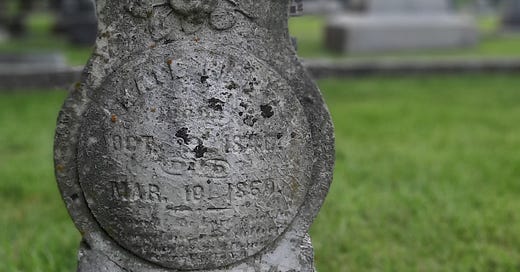



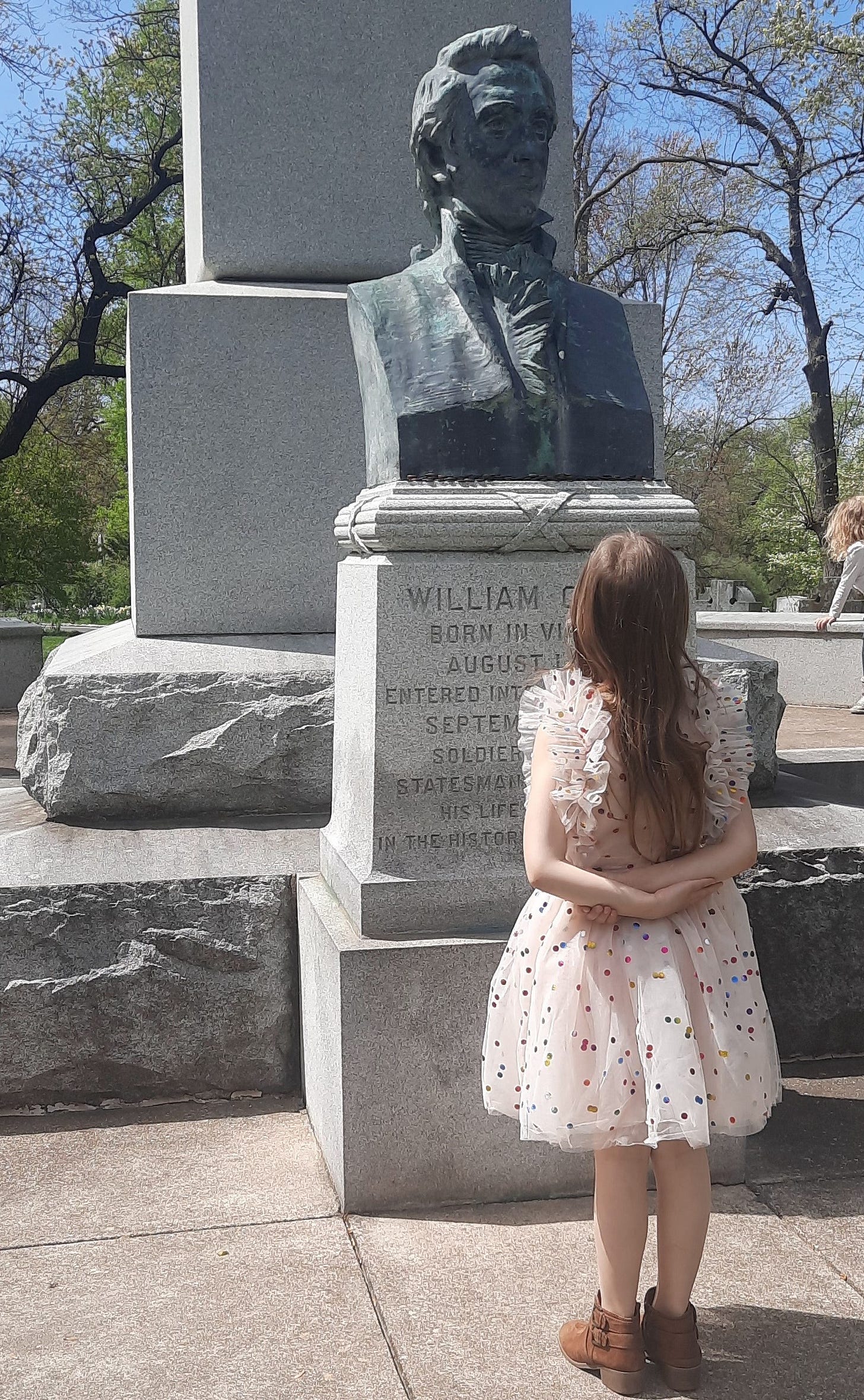
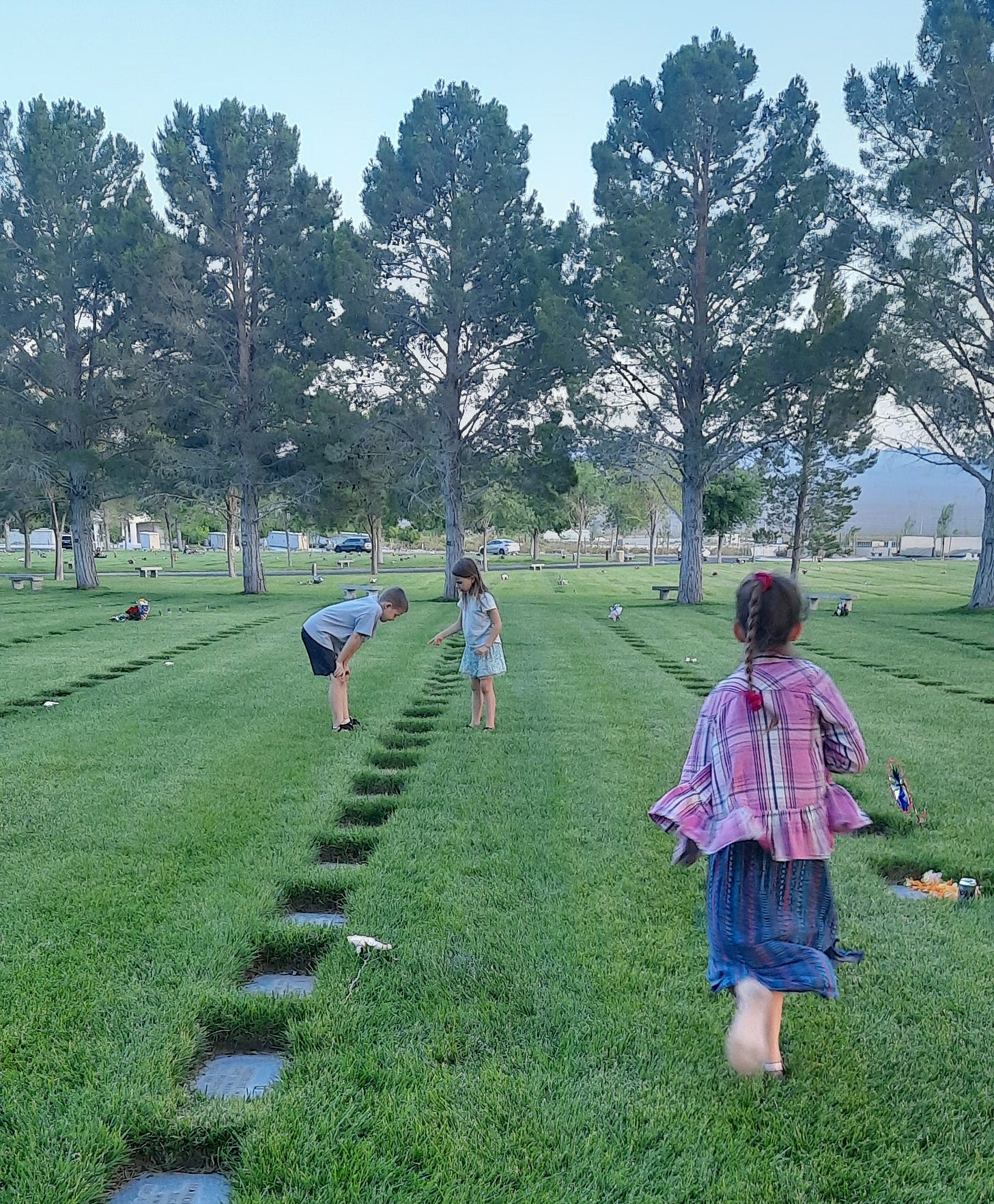
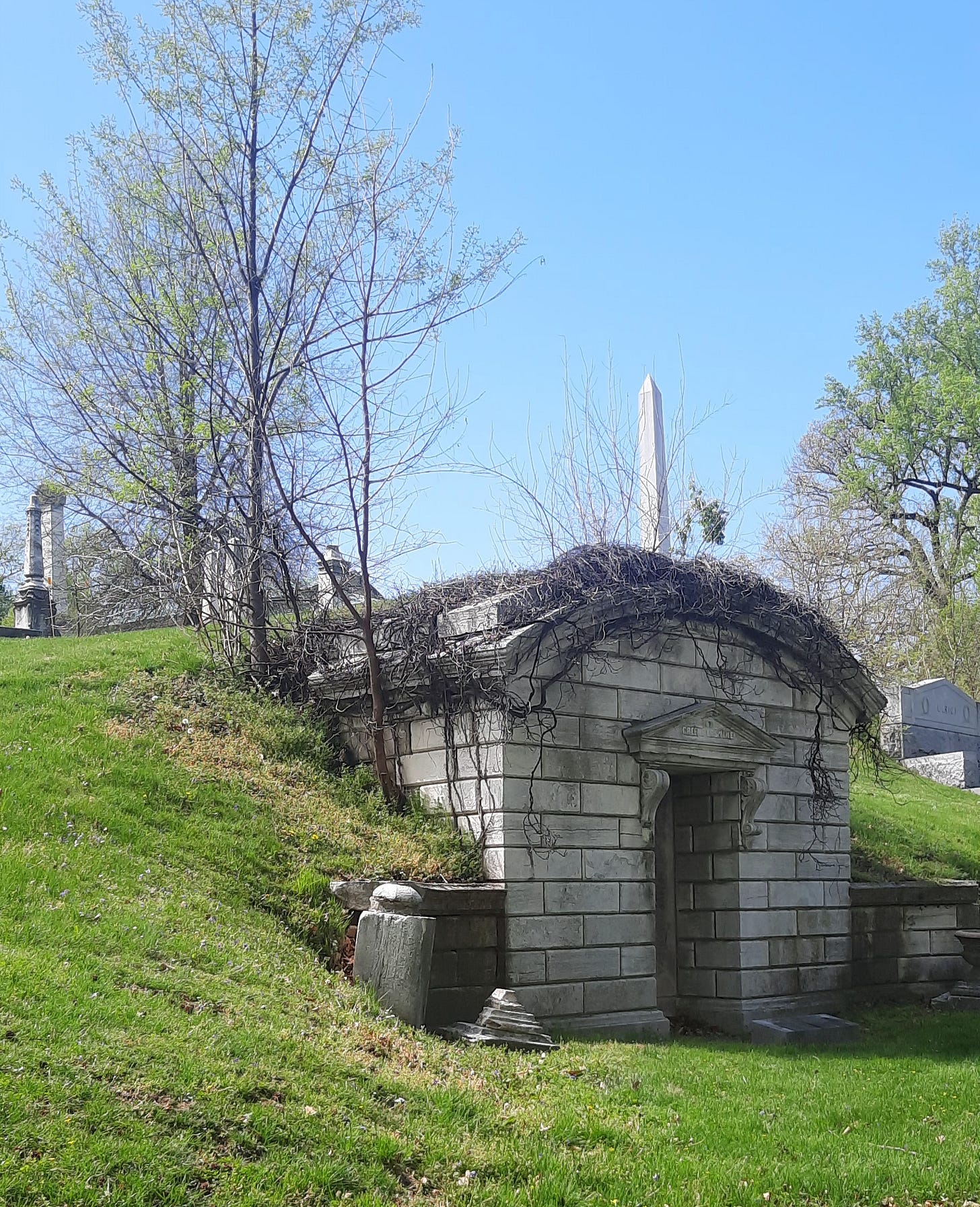

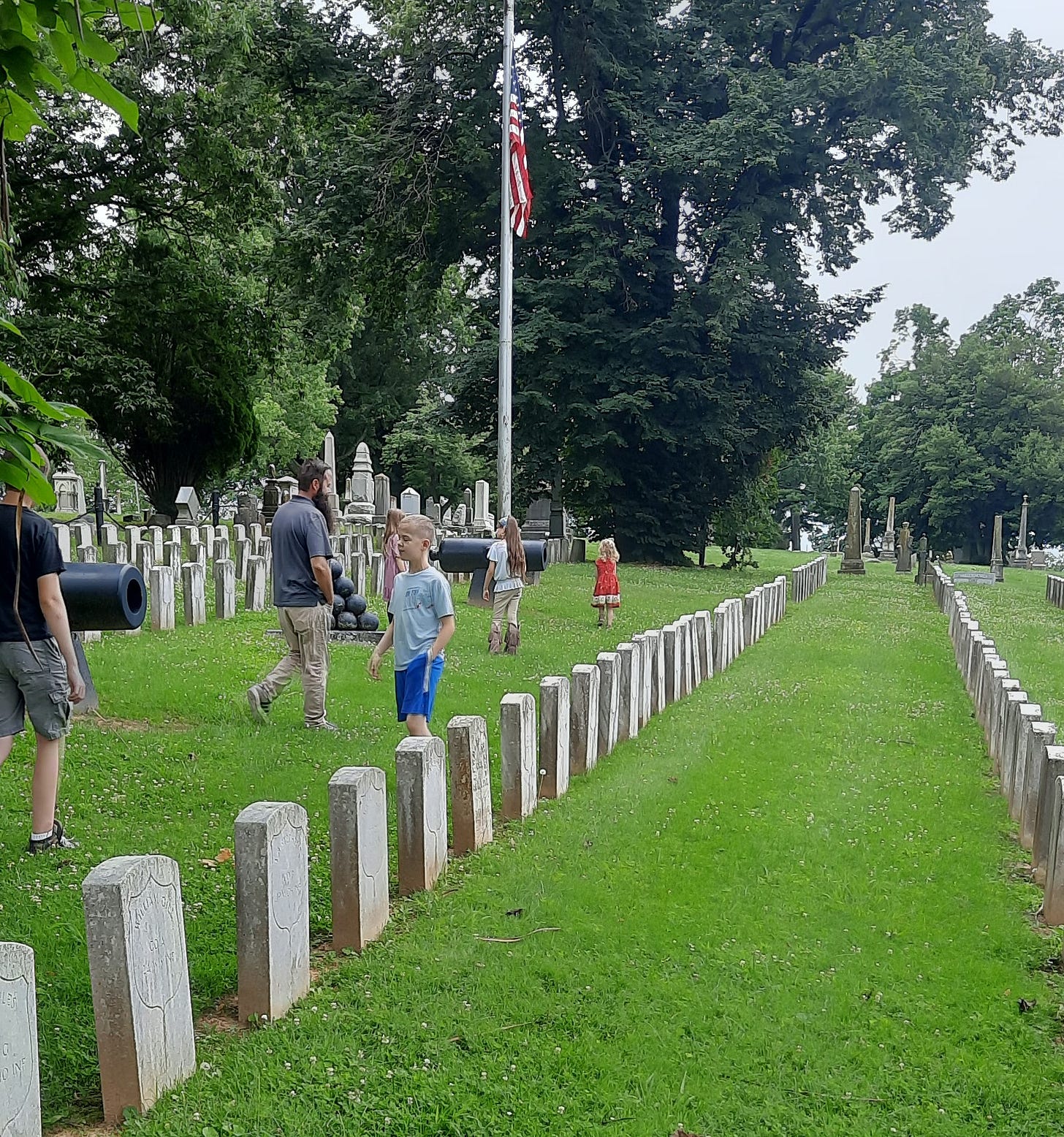

Thank you so much for this. I so agree about the importance of facing death. I remember attending my first funeral at age 7 and how powerful that was. It was an Orthodox funeral so open casket, very up close and personal. I love the idea of taking children to cemeteries on occasions like Memorial Day and would love to do so when my daughters are a little older.
Thank you for sharing that Jessi. I’m also one who likes to roam cemeteries. Just did a local one a month ago. There are very few of us that see the rich history in these places.